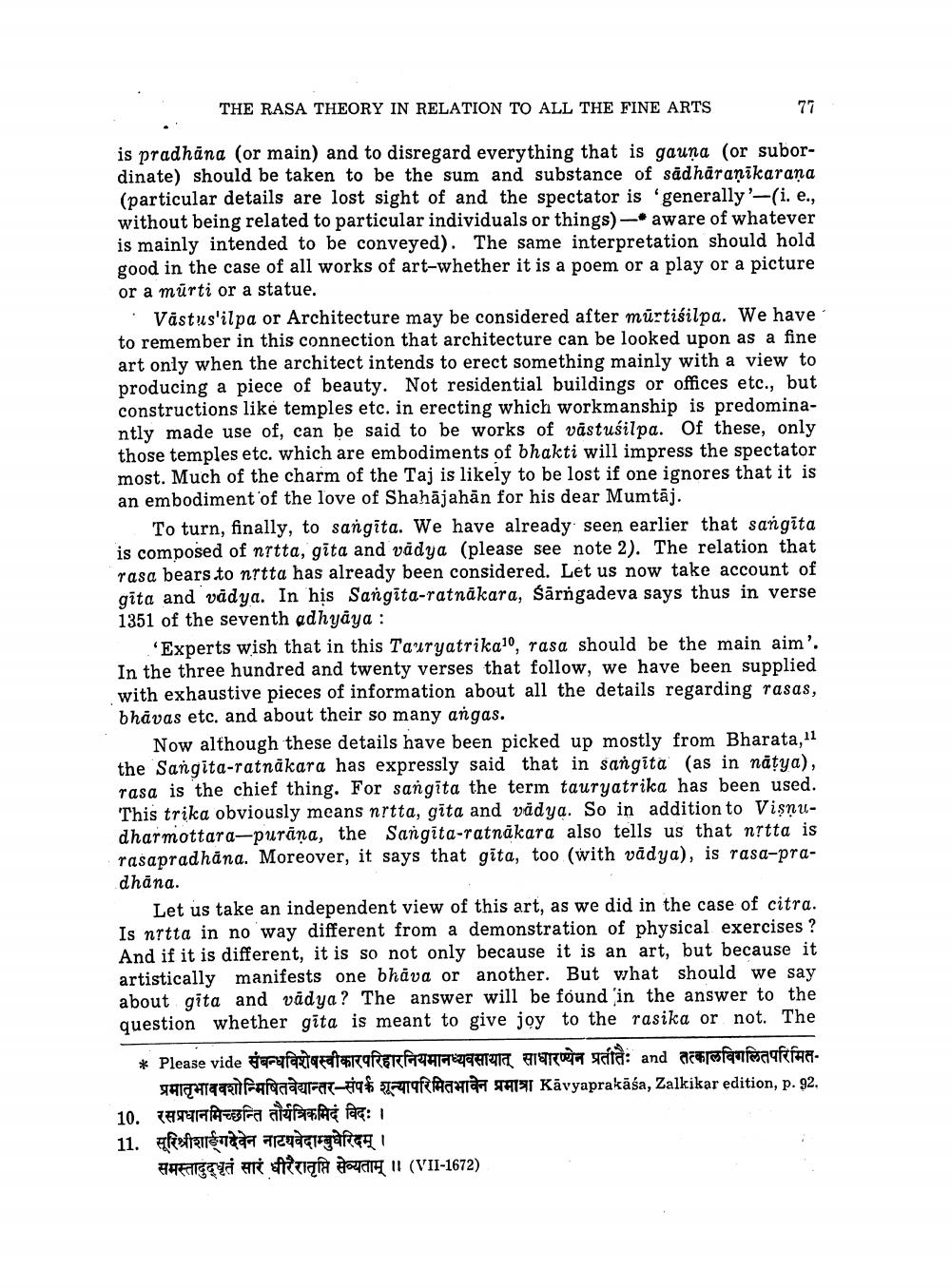________________
THE RASA THEORY IN RELATION TO ALL THE FINE ARTS
is pradhana (or main) and to disregard everything that is gauna (or subordinate) should be taken to be the sum and substance of sadharanikarana (particular details are lost sight of and the spectator is 'generally'-(i. e., without being related to particular individuals or things) – aware of whatever is mainly intended to be conveyed). The same interpretation should hold good in the case of all works of art-whether it is a poem or a play or a picture or a mūrti or a statue.
Västus'ilpa or Architecture may be considered after mürtiśilpa. We have to remember in this connection that architecture can be looked upon as a fine art only when the architect intends to erect something mainly with a view to producing a piece of beauty. Not residential buildings or offices etc., but constructions like temples etc. in erecting which workmanship is predominantly made use of, can be said to be works of vastuśilpa. Of these, only those temples etc. which are embodiments of bhakti will impress the spectator most. Much of the charm of the Taj is likely to be lost if one ignores that it is an embodiment of the love of Shahājahān for his dear Mumtaj.
To turn, finally, to sangita. We have already seen earlier that sangita is composed of nitta, gita and vădya (please see note 2). The relation that rasa bears to nrtta has already been considered. Let us now take account of gita and vădya. In his Sangita-ratnākara, Sārngadeva says thus in verse 1351 of the seventh adhyāya :
Experts wish that in this Tauryatrikal, rasa should be the main aim'. In the three hundred and twenty verses that follow, we have been supplied with exhaustive pieces of information about all the details regarding rasas, bhävas etc. and about their so many angas.
Now although these details have been picked up mostly from Bharata,11 the Sangita-ratnākara has expressly said that in sangita (as in nätya), rasa is the chief thing. For sangīta the term tauryatrika has been used. This trika obviously means netta, gita and vädya. So in addition to Vişnudharmottara-purana, the Sangita-ratnakara also tells us that nitta is rasapradhāna. Moreover, it says that gita, too (with vadya), is rasa-pradhāna.
Let us take an independent view of this art, as we did in the case of citra. Is nytta in no way different from a demonstration of physical exercises ? And if it is different, it is so not only because it is an art, but because it artistically manifests one bhāva or another. But what should we say about gita and vadya? The answer will be found in the answer to the question whether gita is meant to give joy to the rasika or not. The * Please vide separastara RTRERETHEZ1917 Anera zata: and acrofarfecaffha
SHICHTETRİFaarat-9% afHIA TAIAT Kavyaprakāśa, Zalkikar edition, p. 92, 10. ATF fa alifafa lagi 11. feftacenada arayacagareni
AFECT Ari sinara 11 (VII-1672)




